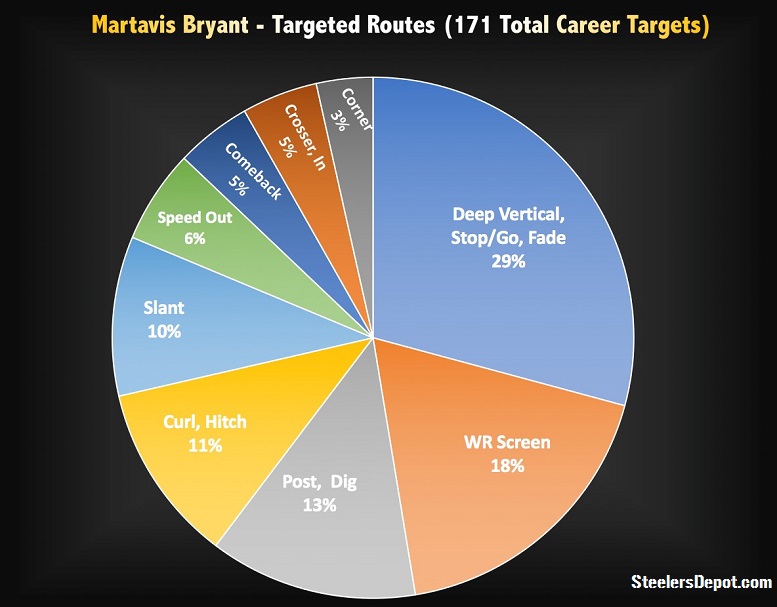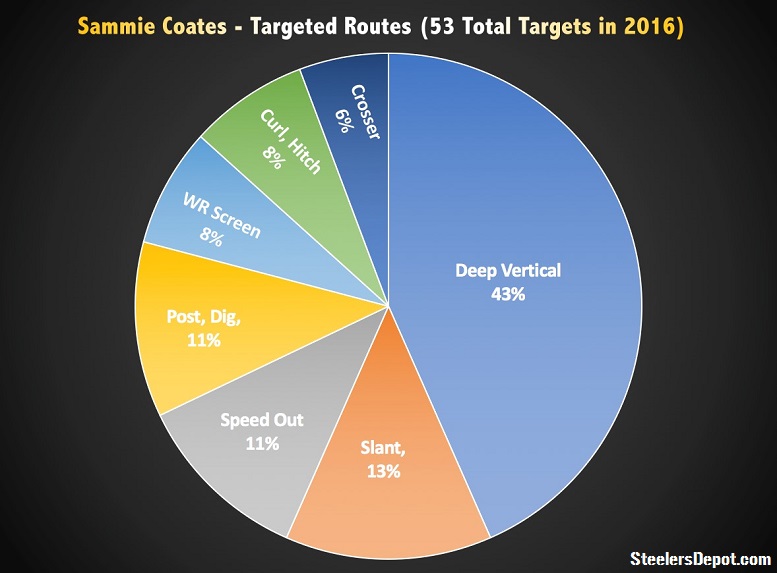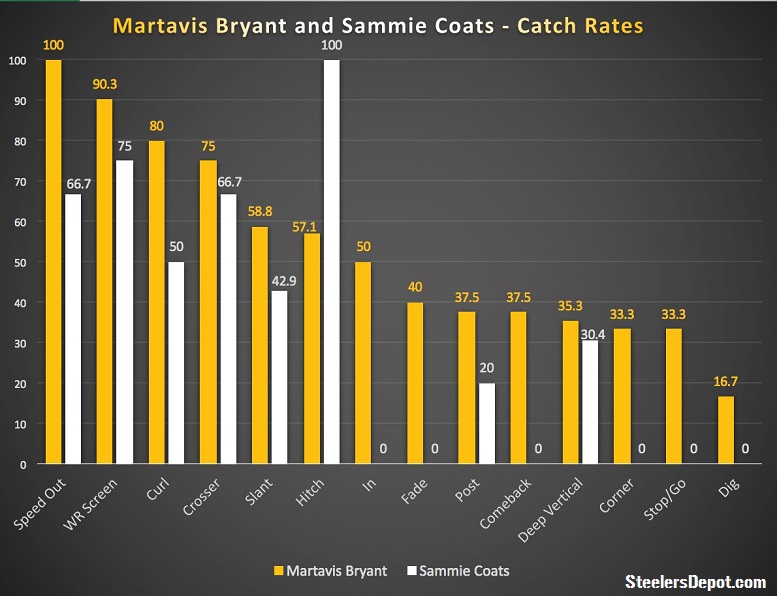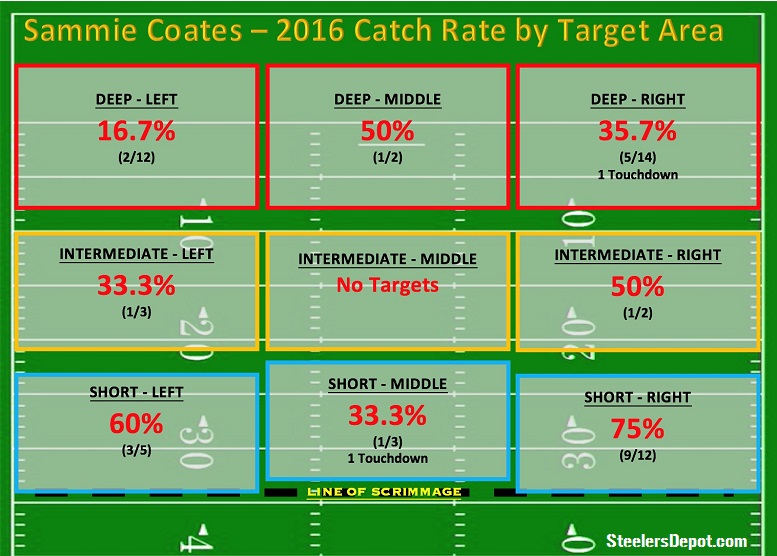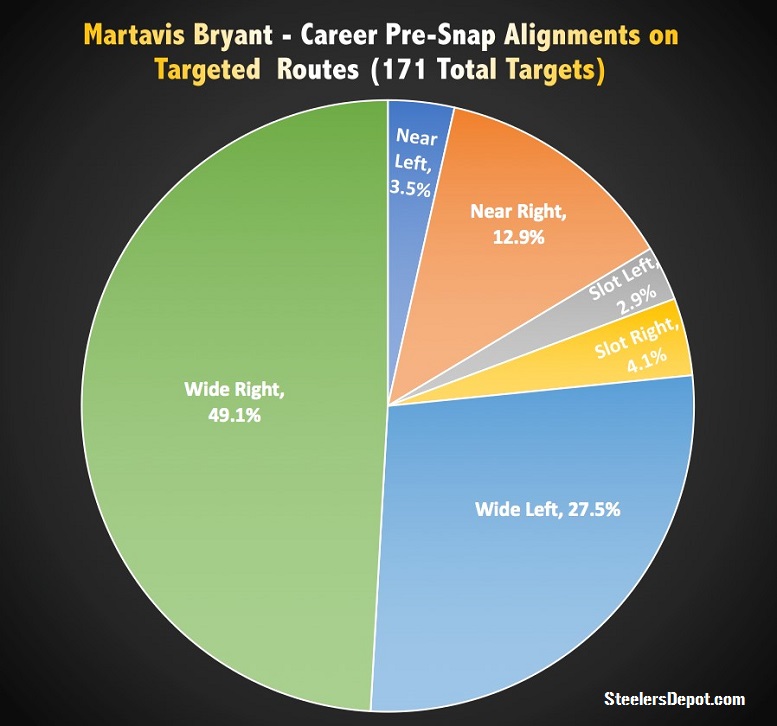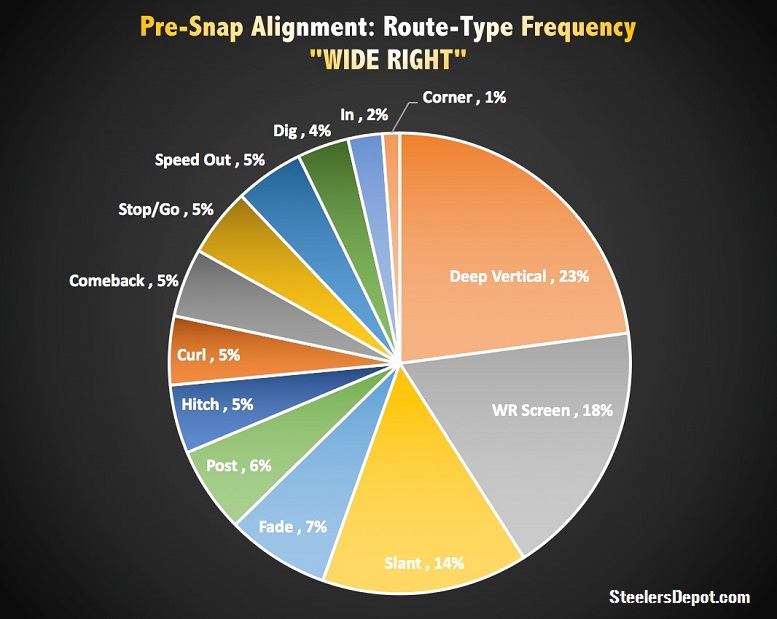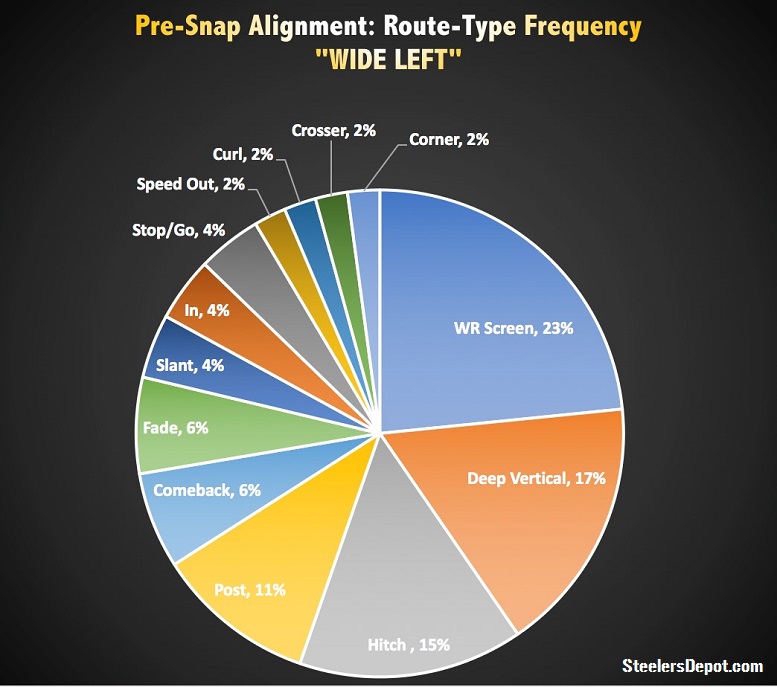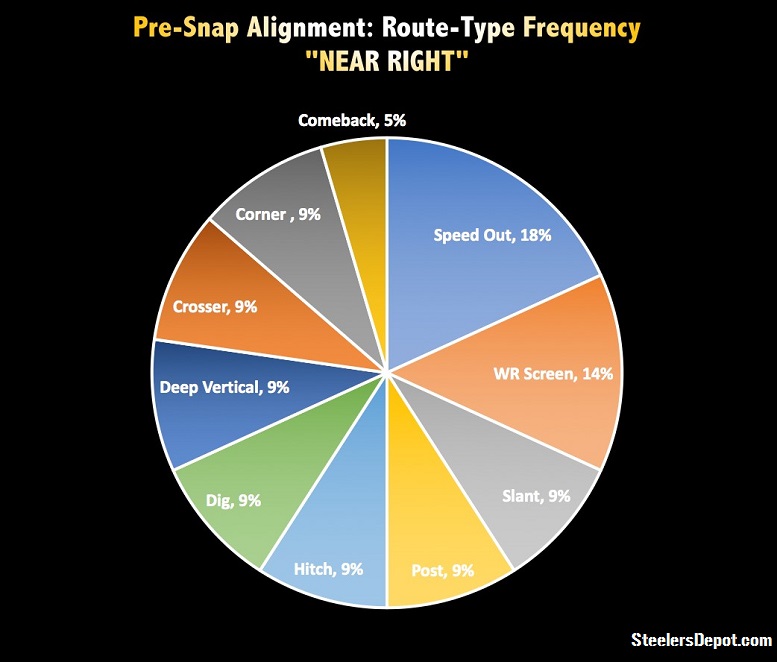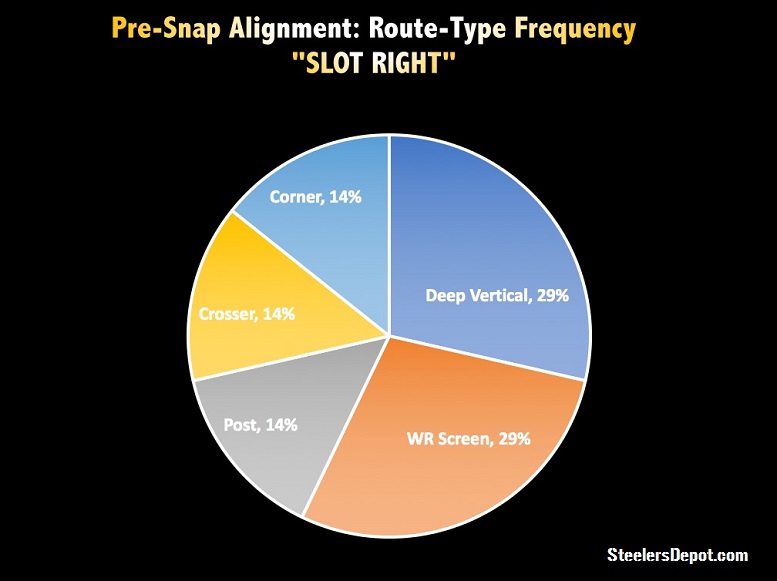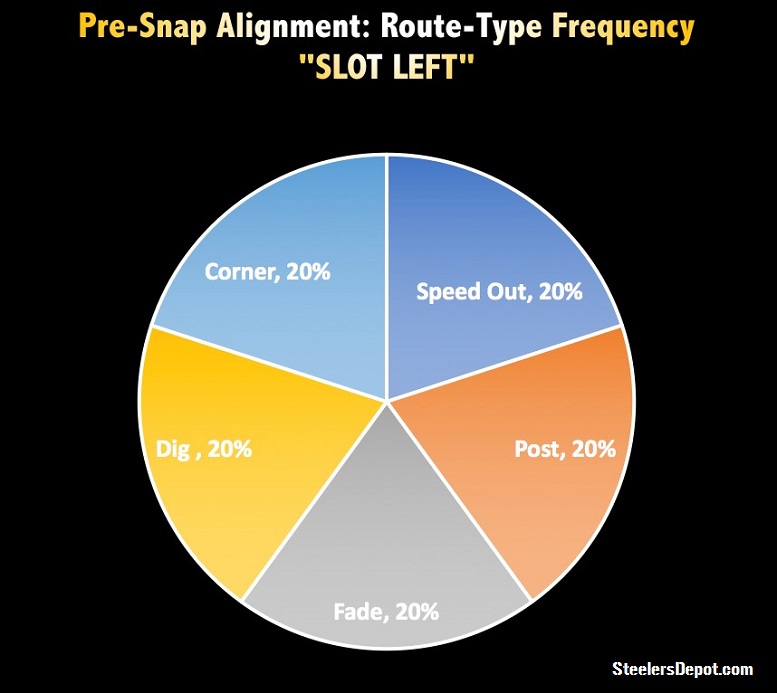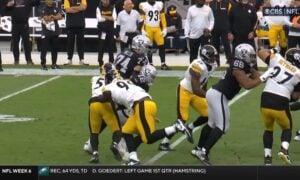With wide receiver Martavis Bryant returning to the Pittsburgh Steelers offense this season, I wanted to examine how he had previously been used in Todd Haley’s system. For this study, I looked at all 171 of his career targets and recorded his catch rates by route type and target area, as well as his pre-snap alignments on his targeted plays. I also compared his routes to those run by Sammie Coates during the 2016 season in order to give some perspective. Hopefully these numbers provide a more nuanced understanding of Bryant’s production/usage and help highlight the various ways he is able to “win” on the field.
Targeted Routes
Below is a chart depicting the percentage of each targeted route-type that Bryant has run, in relation to his overall total career targets. For reference, I have also included a chart of Sammie Coates’ routes. As you can see, Martavis is, unsurprisingly, a far more balanced receiver who can run a diverse route tree. This versatility was missing from the Steelers’ receiving corps in 2016 (with Antonio Brown being an obvious exception):
- Bryant’s Raw Targeted Route Numbers: Deep Vertical (34 targets/171 total), WR Screen (31), Slant (17), Post (16), Hitch (14), Speed Out (10), Fade (10), Comeback (8), Stop/Go (6), Corner (6), Dig (6), Curl (5), In (4), Crosser (4)
- Coates’ Raw Targeted Route Numbers: Deep Vertical (23 Targets), Slant (7), Speed Outs (6), Post (5), WR Screen (4), Crosser (3), Curl (2), Hitch (2), Dig (1)
Catch Rate by Route-Type
Although it is not entirely fair to assess a receiver based on the percentage of passes he catches out of his total targets (given that many different factors that are out of his control can cause an incompletion), it still is helpful in understanding how often he generally “wins” when the ball is thrown his way. For reference, over Antonio Brown’s career, he records a reception on about 67% of his targets, whereas Bryant does so about 54% of the time, and Coates about 43%.
I tried to take a more nuanced look at Bryant’s catch rate by focusing on each individual route-type that he has run, as well as his catch rate in different parts of the field. I also included Coates’ 2016 stats in these areas.
- Bryant: Speed Out (10/10), WR Screen (28/31), Curl (4/5), Crosser (3/4), Slant (10/17), Hitch (8/14), In (2/4), Fade (4/10), Post (6/16), Comeback (3/8), Deep Vertical (12/34), Corner (2/6), Stop/Go (2/6), Dig (1/6)
- Coates: Crosser (2/3), Curl (1/2), Deep Vertical (7/23), Dig (0/1), Hitch (2/2), Post (1/5), Slant (3/7), Speed Out (4/6), WR Screen (3/4).
Pre-Snap Alignments
Lastly, I charted all of Bryant’s pre-snap positions on plays which he was targeted. A “Wide” alignment means that he started the play as the normal outside receiver; a “Near” alignment means that he was the most outside receiver but he was positioned much closer to the end man on the LOS (think outside receiver in a Bunch formation); and a “Slot” alignment obviously means that he was lined up in the slot with another receiver on his outside. I found this data interesting because it shows how Todd Haley used Martavis in various formations, as well as the frequency that Bryant ran each individual route-type from a particular pre-snap location.
- Wide Right: 84 Total Plays – Deep Vertical (19), WR Screen (15), Slant (12), Fade (6), Post (5), Hitch (5), Curl (4), Comeback (4), Stop/Go (4), Speed Out (4), Dig (3), In (2), Corner (1)
-
- Wide Left: 47 Total Plays – WR Screen (11), Deep Vertical (8), Hitch (7), Post (5), Comeback (3), Fade (3), Slant (2), In (2), Stop/Go (2), Speed Out (1), Curl (1), Crosser (1), Corner (1)
- Near Right: 22 Total Plays – Speed Out (4), WR Screen (3), Slant (2), Post (2), Hitch (2), Dig (2), Deep Vertical (2), Crosser (2), Corner (2), Comeback (1)
- Near Left: 6 Total Plays – Deep Verticals (3), Post (2), Slant (1)
- Slot Right: 7 Total Plays – Deep Vertical (2), WR Screen (2), Post (1), Crosser (1), Corner (1)
- Slot Left: 5 Total Plays – Speed Out (1), Post (1), Fade (1), Dig (1), Corner (1)


